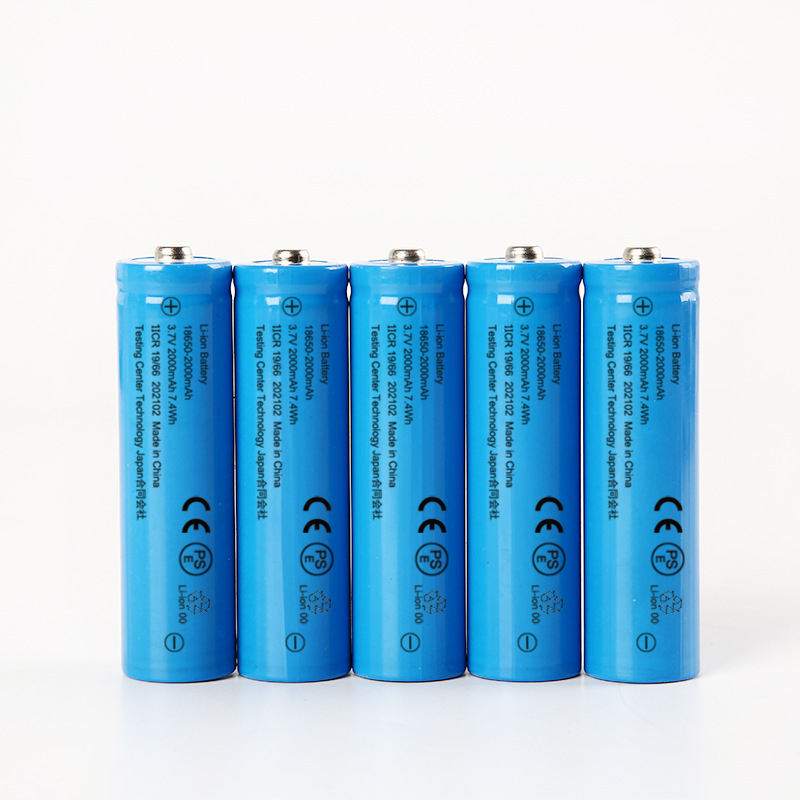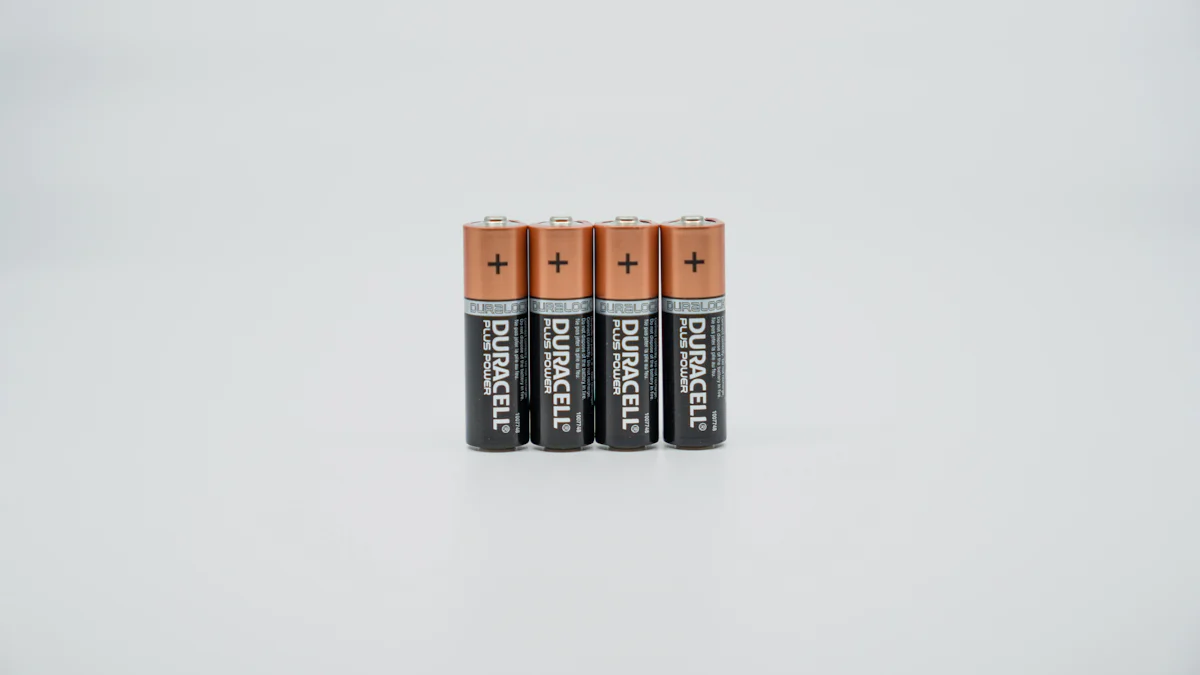Flashlight Battery Showdown Rechargeable vs Disposable Options

Choosing the right battery for your flashlight ensures optimal performance and reliability. Rechargeable batteries offer reusability, while disposable batteries provide convenience. Factors like battery type, size, voltage, and capacity play a crucial role. Lithium batteries excel in extreme conditions, while alkaline options suit everyday use. Proper selection guarantees consistent light when you need it most.
Key Takeaways
Rechargeable batteries help save money in the long run. You can use them many times, which makes them cheaper for people who use flashlights often.
Disposable batteries are easy to find and use. They are great for emergencies because they last a long time and don’t need charging.
Think about how you use your flashlight before picking batteries. Use rechargeable ones for daily use, but disposable lithium batteries work well in emergencies.
Rechargeable Batteries for Flashlights

What Are Rechargeable Batteries?
Rechargeable batteries are power sources designed for repeated use. Unlike disposable batteries, they can be recharged multiple times, making them a cost-effective and sustainable option for powering devices like flashlights. Two popular types of rechargeable batteries dominate the market: Nickel-Metal Hydride (NiMH) and Lithium-Ion (Li-ion). NiMH batteries offer higher capacity and are an eco-friendly alternative to disposables. Li-ion batteries, on the other hand, provide high energy density, retain charge efficiently, and are lightweight. These qualities make them ideal for high-performance flashlights. Among Li-ion options, the 18650 battery stands out for its long lifespan and energy efficiency, while the 21700 battery is gaining traction due to its larger capacity, ranging from 4000mAh to 5000mAh.
Advantages of Rechargeable Batteries
Rechargeable flashlights offer several benefits. First, they reduce waste by minimizing the need for single-use batteries, which often end up in landfills. They also contain fewer toxic substances, making them more environmentally friendly. Many rechargeable flashlights can be powered through renewable energy sources like USB ports or solar panels, further enhancing their eco-credentials. Additionally, rechargeable batteries save money over time. While the initial cost may be higher, their ability to replace hundreds of disposable batteries makes them a smart investment. Their long life ensures consistent performance, and modern designs eliminate issues like the memory effect, which plagued older battery types.
Drawbacks of Rechargeable Batteries
Despite their benefits, rechargeable flashlights have some limitations. They often come with a higher upfront cost compared to disposable options. Their battery life, while long, is finite, meaning they will eventually need replacement. Dependence on power sources for recharging can pose challenges, especially in remote areas or emergencies. Charging times vary, which may inconvenience users needing immediate light. The table below summarizes these drawbacks:
Drawback | Description |
|---|---|
Higher Upfront Cost | Rechargeable flashlights often have a higher initial price tag compared to disposable ones. |
Limited Battery Life | Rechargeable batteries have a finite lifespan, limiting their long-term usability. |
Dependence on Power | Rechargeable flashlights require access to power for recharging, which can be challenging in some situations. |
Charging Time | The time to fully recharge a flashlight can vary, affecting usability in urgent situations. |
By understanding these pros and cons, you can decide if rechargeable flashlights align with your needs.
Disposable Batteries for Flashlights
What Are Disposable Batteries?
Disposable batteries, also known as single-use batteries, are designed for one-time use. Once depleted, you must replace them with new ones. These batteries are widely used in flashlights due to their availability and ease of use. Common types include alkaline and lithium batteries, each offering unique benefits. The table below highlights some of the most popular disposable battery options for flashlights:
Battery Type | Chemistry | Voltage | Capacity (mAh) | Rechargeable |
|---|---|---|---|---|
CR123A | Lithium | 3V | 1300-1700 | No |
CR2 | Lithium | 3V | 700-900 | No |
CR2450 | Lithium Manganese Dioxide | 3V | 500-620 | No |
9V | Alkaline/Lithium/Ni-MH | 9V | 200-600 | Yes/No |
Alkaline | Alkaline | 1.5V | 1500-3000 | No |
Advantages of Disposable Batteries
Disposable batteries offer several advantages, especially for occasional flashlight users. These include:
Lower Initial Cost: They are budget-friendly, making them ideal for users who do not frequently use flashlights.
Readily Available Power: You can find disposable batteries in most stores, ensuring quick replacements during emergencies.
No Charging Required: These batteries eliminate the need for charging, making them convenient for infrequent use.
Long Shelf Life: With a shelf life of up to 10 years for alkaline and 15 years for lithium batteries, they remain reliable for emergency situations.
Drawbacks of Disposable Batteries
Despite their convenience, disposable batteries come with notable drawbacks. Their environmental impact is a significant concern. Improper disposal can lead to toxic leakage, harming sanitation workers and the environment. Harmful chemicals like cadmium and lead, found in some batteries, pose risks to human health and wildlife. Additionally, disposable batteries have a finite battery life, requiring frequent replacements for high-usage devices. This can increase long-term costs and contribute to waste accumulation.
Rechargeable vs. Disposable Batteries: Key Comparisons
Cost: Initial Investment vs Long-Term Savings
When comparing rechargeable vs. disposable batteries, cost plays a significant role. Rechargeable batteries require a higher initial investment. You’ll need to purchase the batteries themselves and a charger, which can cost $10 to $15 more than disposable options. However, rechargeable batteries are cost-effective over time. Their ability to be reused hundreds or even thousands of times leads to substantial long-term savings. For instance, businesses using 100 flashlights could save over $200 per flashlight in the first year by switching to rechargeable options. On the other hand, disposable batteries are cheaper upfront but require frequent replacements, which can accumulate high costs over time.
Environmental Impact of Battery Choices
The environmental impact of your battery choice is another critical factor. Rechargeable batteries offer significant environmental benefits. They can be reused up to 1,000 times, reducing resource depletion and waste. They also emit 28% fewer greenhouse gases over their lifetimes and utilize only 4.3% of the non-renewable resources that disposable batteries require. Additionally, 90% of rechargeable batteries can be recycled, making them an environmentally friendly battery option. In contrast, disposable batteries contribute to more waste and require specialized recycling services to prevent toxic materials from entering landfills.
Convenience and Accessibility
Disposable batteries excel in convenience and accessibility. You can find them in most stores, and they don’t require charging, making them ideal for emergencies or infrequent use. Rechargeable flashlights, however, depend on charging, which may not always be practical. Yet, modern rechargeable flashlights often feature USB or solar charging options, improving their usability in various situations. While disposable batteries have a longer shelf life, rechargeable options provide energy-saving benefits and reduce the hassle of frequent replacements.
Performance in Flashlights
Performance is a key consideration when choosing between rechargeable vs. disposable batteries. Rechargeable flashlights maintain reliable performance by delivering consistent brightness until nearly depleted. Disposable batteries, however, may show a decline in brightness as they drain, leading to less reliable performance. Additionally, disposable batteries can lose efficiency in extreme temperatures, while rechargeable options often perform better in such conditions. For high-drain flashlights, rechargeable batteries are the preferred choice due to their steady output and energy-saving capabilities.
Choosing the Right Battery for Your Flashlight
Best Choice for Frequent Flashlight Use
For frequent flashlight users, lithium-ion batteries are the most reliable option. These batteries deliver consistent power over extended periods, ensuring your flashlight remains bright and dependable. Their high energy density and long lifespan make them ideal for outdoor activities like camping or hiking. Flashlights with built-in lithium-ion batteries offer added convenience, as you can recharge them via USB from power banks or solar panels. This feature eliminates the need for disposable batteries, saving money and reducing waste. Additionally, lithium-ion batteries perform well in cold weather, making them suitable for various environments.
Best Choice for Emergency Flashlights
Emergency preparedness requires batteries that are dependable and long-lasting. Lithium batteries stand out due to their extended shelf life and ability to function in extreme temperatures. They provide high energy density, ensuring your flashlight delivers reliable light during emergencies. Alkaline batteries are another practical choice for general household use, as they are affordable and widely available. The table below highlights the advantages of these battery types:
Battery Type | Advantages | Ideal Use Case |
|---|---|---|
Lithium | Long shelf life, performs well in extreme temperatures, high energy density | Emergency flashlights, outdoor use |
Alkaline | Commonly available, lower cost | General household use |
Best Choice for Budget-Friendly Options
If you are budget-conscious, NiMH rechargeable batteries offer an excellent balance of cost and performance. These batteries are eco-friendly and provide up to 1,000 charge cycles, making them a cost-effective solution for long-term use. Their steady voltage output ensures consistent light, and their compatibility with common sizes like AA and AAA adds versatility. Investing in rechargeable batteries reduces the need for frequent replacements, saving money over time.
Best Choice for Eco-Friendly Users
For environmentally conscious users, rechargeable flashlights are the most eco-friendly option. They minimize waste by reducing the need for disposable batteries. However, it is essential to consider the environmental impact of rechargeable batteries' production and lifecycle. Mining metals and carbon emissions contribute to pollution, and recharging often relies on non-renewable energy sources. Despite these challenges, rechargeable flashlights remain a more sustainable choice compared to disposable batteries, aligning with eco-friendliness goals.
Choosing between rechargeable and disposable batteries depends on your specific needs. Rechargeable batteries offer higher power capacity, cost-effectiveness, and environmental benefits. However, they rely on power sources and have a limited lifespan. Disposable batteries provide convenience and long shelf life but contribute to waste and higher long-term costs.
Pros | Cons |
|---|---|
Higher power capacity for high-drain devices | Bulkier batteries |
Cost-effective in the long run | Dependence on power sources |
Environmentally friendly | More expensive than AA batteries |
Longer lifespan than single-use batteries | Limited battery life |
Consistent power flow |
When selecting batteries for your flashlight, consider factors like compatibility, performance, and durability. Evaluate your usage patterns and operating conditions. For frequent use, rechargeable options excel. For emergencies, disposable lithium batteries ensure reliable light. Aligning your choice with your priorities ensures optimal flashlight performance and sustainability.
FAQ
What type of battery lasts the longest in flashlights?
Lithium batteries last the longest. They offer high energy density, extended shelf life, and reliable performance, especially in emergency or high-drain flashlights.
Can you mix rechargeable and disposable batteries in a flashlight?
No, mixing battery types can damage your flashlight. Always use batteries of the same type, brand, and charge level for optimal performance.
How do you store batteries for emergency flashlights?
Store batteries in a cool, dry place. Keep them in their original packaging or a battery case to prevent short circuits and extend their shelf life.
See Also
Maximize Your Flashlight's Battery Life With These Tips
How to Select the Best Rechargeable Flashlight for Hiking
Your Comprehensive Guide to the Most Durable Flashlights
Best Rechargeable Pocket Flashlights Perfect for Holiday Gifts
